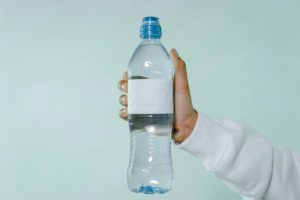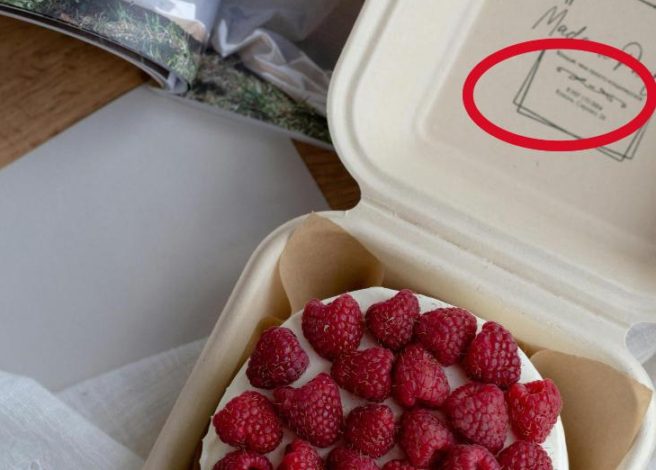Listen to the audio recording of this blog post or check out the featured Podcast about this topic.
At a Glance
- Packaging claims must be truthful, substantiated, and match how the audience interprets them.
- FTC and states can penalize false or misleading claims, especially on hot topics.
- Environmental claims need strong proof to avoid greenwashing.
- Verify supplier claims, consider context, and choose partners who back up promises.
Walk down any grocery aisle, and you’ll see packaging claims that would make even the most optimistic marketer blush. “100% recyclable” stickers on containers that no recycling facility within 500 miles can actually handle (it’s made from WHAT?). Could something really be made from 100% Post-Consumer Recycled (PCR) content? Absolutely, but not on a large scale. There isn’t enough PCR material available to meet all these big promises.
As food industry professionals, you’ve seen it all. When claims are made by companies that mislead consumers, it can lead to regulatory crackdowns and costly lessons.
At Inline Plastics, we’ve provided packaging solutions for the fresh food industry for over 50 years. We’ve seen how the landscape has evolved. As consumers have become more discerning about their food packaging, companies have responded with marketing that touts its benefits. But sometimes these claims may be considered unfair or deceptive based on how consumers are likely to interpret and understand them.
In this article, we’ll break down the confusing world of packaging claims so you can work with suppliers more confidently. You’ll learn what counts as a claim (spoiler: it’s way broader than most people think). We will also discuss enforcement actions against marketers over allegedly deceptive claims. You’ll also see why some industries may face increased scrutiny by the Federal Trade Commission (FTC) and state attorneys general. Most importantly, you’ll walk away knowing how to spot potential red flags in supplier marketing, ask the right questions, and better protect your brand from getting caught up in unwanted litigation.
What Exactly Constitutes a “Claim”?
 In the packaging world, a claim is any statement about a product’s attributes made in connection with its marketing or sale, whether explicit or implied. The Federal Trade Commission (FTC) enforces consumer protection laws at the federal level. At the state level, public enforcers and private plaintiffs use their respective consumer protection laws to initiate legal actions.
In the packaging world, a claim is any statement about a product’s attributes made in connection with its marketing or sale, whether explicit or implied. The Federal Trade Commission (FTC) enforces consumer protection laws at the federal level. At the state level, public enforcers and private plaintiffs use their respective consumer protection laws to initiate legal actions.
Claims show up everywhere — websites, sales brochures, product labels, and even trade show displays. But here’s what matters most: marketers avoid making claims that mislead customers. This principle applies to all companies making claims in their marketing, including business-to-business transactions. Regulators assess the truthfulness of claims based on how reasonable customers are likely to interpret them. The reasonable interpretation of a claim may be different depending on whether the customer is a consumer or another business.
The Substantiation Standard: Your Safety Net
Marketers should ensure the claims they make are true and substantiated. This means that they must possess competent evidence prior to making the claim, and that the substantiation should be sufficient in quality and quantity to support the claim’s truthfulness. Simply put, “the proof is in the pudding” holds true.
Unsubstantiated or vague assertions are misleading to consumers. Marketers should avoid unqualified claims that are difficult to substantiate and are encouraged to make specific and objectively verifiable claims instead.
FTC Enforcement
 If the FTC finds a company making false or misleading claims, it can initiate enforcement actions. This may include warning letters, cease and desist orders, and civil penalties. The FTC will often focus its attention on issues involving claims with increasing consumer visibility and interest. For example, the FTC noticed an increase in claims that some textile products were made from bamboo in 2022. After determining that these claims were deceptive and misleading, the FTC sued major retailers for falsely marketing rayon textile products as bamboo.
If the FTC finds a company making false or misleading claims, it can initiate enforcement actions. This may include warning letters, cease and desist orders, and civil penalties. The FTC will often focus its attention on issues involving claims with increasing consumer visibility and interest. For example, the FTC noticed an increase in claims that some textile products were made from bamboo in 2022. After determining that these claims were deceptive and misleading, the FTC sued major retailers for falsely marketing rayon textile products as bamboo.
Environmental Marketing Claims
Marketing claims about the environmental attributes of packaging are some of the hottest buttons. Whether discussing recyclability, post-consumer recycled content, or biodegradability, marketers must diligently substantiate and qualify these claims (such as 100% post-consumer recycled content) to avoid deceiving consumers.
The FTC’s Green Guides help marketers avoid making environmental marketing claims that are unfair or deceptive under Section 5 of the FTC Act. They offer guidance on how consumers are likely to interpret specific terms and how marketers can substantiate and qualify their claims to avoid misleading audiences. For example, the Green Guides address practices like greenwashing — such as using vague labels like “eco-friendly” without adequate evidence — to ensure environmental messaging is truthful and not misleading. The FTC is currently reviewing the Green Guides to determine whether any aspects are outdated.
How to Evaluate Your Packaging Partners’ Claims
 As a food industry professional, you need to know how to separate legitimate packaging solutions from marketing fluff. Here’s how to protect your brand when evaluating supplier claims:
As a food industry professional, you need to know how to separate legitimate packaging solutions from marketing fluff. Here’s how to protect your brand when evaluating supplier claims:
Ask for the evidence up-front. When a packaging supplier makes claims about their products, they should have solid evidence to back it up. If they can’t provide substantiation immediately, that’s a red flag.
Consider where you’ll use their claims. If you want to share packaging benefits in your marketing, remember that claims aimed at consumers may be interpreted differently than those for B2B. What works in a trade publication might not fly on a product label.
Look for context and honesty. Be wary of suppliers who claim their packaging alone will solve complex problems such as shelf-life extension or sustainability concerns. Legitimate partners recognize that many factors affect food preservation. They also show how their solution connects to the larger context.
Verify with your legal team. Check with your legal counsel before using any supplier claims in your marketing materials. This is especially important for claims about environmental benefits or food safety. Your brand is ultimately responsible for any claims you make, regardless of where they originated.
Moving into Unclaimed (or Claimed) Territory
The best suppliers for you aren’t the ones making bold, questionable claims. Instead, look for those who value transparency and can support their promises with substantial evidence. When you look at packaging solutions, the best partners often under-promise and over-deliver. They do this instead of making big, unsubstantiated marketing claims.
To choose the right packaging solutions, you need to evaluate supplier claims, ask the right questions to check their proof, and work with partners who value compliance. This will protect your brand and meet your needs.
Remember: In the world of packaging partnerships, the most valuable suppliers aren’t those with the flashiest marketing claims — they’re the ones who can substantiate everything they promise and help you navigate the regulatory landscape safely.
Do you want to know more about plastic packaging solutions? Visit our Learning Center today and explore a wide variety of topics.
Disclaimer: This article is for informational purposes only and does not constitute legal advice. Laws and regulations regarding advertising claims can be complex and vary by jurisdiction. Always consult qualified legal counsel before making specific claims about your products or implementing marketing strategies.

